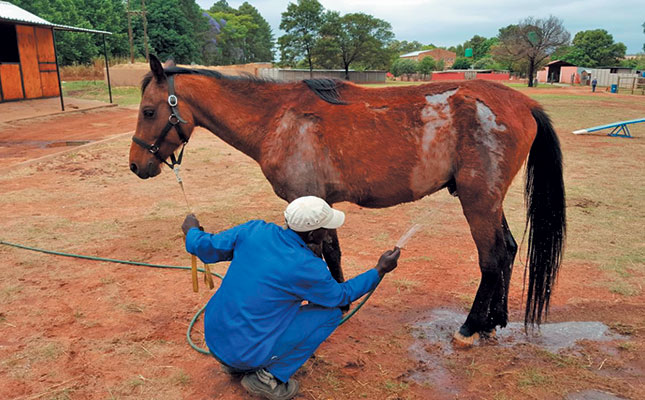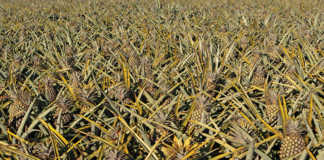
Photo: Kim Dyson
Sweet itch is an allergic-type reaction that occurs mainly in summer. The horse itches on its ears, mane, withers and base of its tail, and will rub and bite the affected areas.
If you leave the condition untreated, the skin will become thicker, wrinkled and discoloured, with little hair cover.
Sweet itch is usually attributed to the saliva of a biting midge of the Culicoides genus. This is most active in the early morning and late afternoon.
Oils that can help ease the reaction to insects include sandalwood, pennyroyal, catmint, lemongrass, citronella and lavender.
Apply a few drops of one or two of these to the horse’s poll and tail area twice a day. Dilute the oils with an appropriate carrier oil.
If the reaction is serious, it is important to prevent further bites. You can do this by burning a little old grass with citronella oil in a drum. Position the drum so that the horse does not inhale the smoke.
Sweet itch blankets are also an effective preventative measure in horses that are prone to the condition.
Healing the skin
The next step is to treat the bare patches caused by the rubbing. To speed up healing, apply graphites with Hypericum and calendula lotion topically.
One or more of the following can be boiled and the leaves applied as a warm compress to the infection: cleavers (Galium aparine), Echinacea, Calendula and/or nettles.
Feeding salt, potassium sulphate and calcium carbonate will help heal the skin from the inside.
Horses respond well to 10 crushed pills administered three to six times a day. But, as always, check with your vet first.
Washing the horse with a gentle or mild antiseptic soap, such as Betadine, is also a good idea.
Mange
Mange is a similarly irritating condition caused by one of a variety of tiny mites that embed themselves in the skin or hair follicle. To control it, stable your horse in the early morning and early evening, and keep the grass in the paddocks short.
Ringworm
Ringworm is a fungal infection of the skin caused by organisms of the Microsporum and Trichophyton genera. While not especially uncomfortable, it forms unsightly, raised and flaky rings on the skin and is highly contagious, both between horses and between horses and other mammals, including humans.
Kyron Laboratories makes a ringworm ointment that works very well. Tea tree oil applied directly onto the affected area will also help.
Fungus thrives in warm, dark, moist places. Therefore make sure that numnahs are dried before putting them away in the tack room, and rinse and dry your horse after working it.
To prevent the fungus from spreading, wash grooming kits once a month, and if you have transported a horse with ringworm, disinfect the horsebox. Use neat vinegar or a commercial anti-fungal product.
If you have more than one horse, it is best to keep a separate grooming kit for each one; this lessens the chance of cross-contamination.
Kim Dyson breeds Arabians and Lusitanos, and has 22 years’ experience in holistic equine and human body work.











